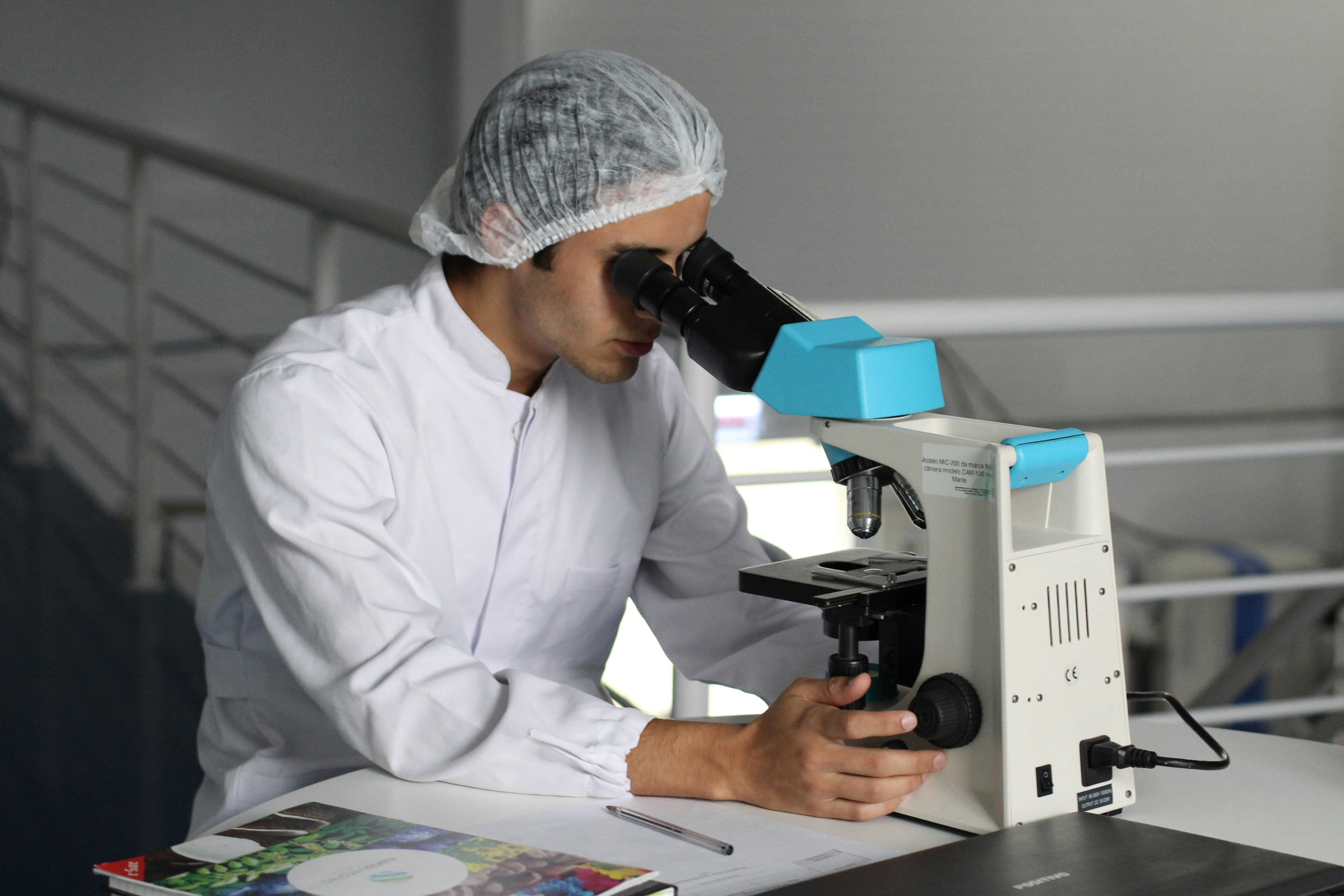Have you ever wondered how doctors diagnose a swollen prostate? It's important to recognize the signs and symptoms of this condition, as it can lead to various urinary problems. In this article, we will explore the methods that healthcare professionals use to diagnose a swollen prostate, including digital rectal exams and prostate-specific antigen (PSA) blood tests. By gaining a better understanding of these diagnostic techniques, you can take proactive steps towards maintaining your urological health.
Understanding the Prostate
Definition of the prostate gland
The prostate gland is a small, walnut-sized gland located between the bladder and the penis in men. It surrounds the urethra, which is the tube that carries urine and semen out of the body. The prostate gland plays a crucial role in the male reproductive system.
Functions of the prostate gland
The main functions of the prostate gland include producing and secreting seminal fluid, which is a vital component of semen. Seminal fluid nourishes and protects the sperm, helping them survive and reach their destination during ejaculation.
Understanding prostate enlargement
Prostate enlargement, also known as benign prostatic hyperplasia (BPH), is a common condition that affects many men as they age. When the prostate gland becomes enlarged, it can put pressure on the urethra, causing a variety of urinary symptoms. Understanding the causes and symptoms of prostate enlargement is essential for timely diagnosis and appropriate treatment.
Reasons for Prostate Swelling
Prostate cancer
Prostate cancer is a serious condition that develops when the cells in the prostate gland start to grow uncontrollably. This abnormal growth can lead to the formation of a tumor, which can potentially spread to surrounding tissues and other parts of the body. Prostate cancer is one of the leading causes of cancer-related deaths in men, making early detection and proper treatment crucial.
Benign Prostatic Hyperplasia (BPH)
Benign prostatic hyperplasia (BPH) is a non-cancerous condition that causes the prostate gland to enlarge due to an increase in the number of cells. As the prostate gland grows, it can squeeze the urethra and obstruct the normal flow of urine. BPH is a common condition, especially in older men, and can cause bothersome urinary symptoms.
Prostatitis
Prostatitis is the inflammation of the prostate gland, usually caused by a bacterial infection. It can lead to discomfort, pain, and urinary problems. Prostatitis can occur in men of all ages and can be acute or chronic.
Prostate abscess
A prostate abscess is a rare but serious condition that occurs when pus accumulates in the prostate gland. It is often caused by a bacterial infection and can lead to severe pain, difficulty urinating, and other complications if left untreated.
Common Symptoms of a Swollen Prostate
Frequent urination
One common symptom of a swollen prostate is the need to urinate more frequently, especially during the night. This can disrupt sleep patterns and impact daily activities.
Painful urination
Another symptom is painful urination, also known as dysuria. This can occur due to the inflammation or compression of the urethra caused by the enlarged prostate.
Blood in urine
Sometimes, a swollen prostate can lead to visible blood in the urine, a condition known as hematuria. It is essential to seek medical attention if blood is present in the urine, as it can be a sign of a more serious underlying condition.
Difficulty in urinating
When the prostate gland enlarges, it can obstruct the flow of urine, leading to difficulty in starting urination or maintaining a steady stream. This symptom, known as urinary hesitancy, can cause frustration and discomfort.
When to Seek Medical Attention
Significant changes in urination
If you experience significant changes in your urination patterns, such as increased frequency, pain, or difficulty, it is important to consult a healthcare professional. These changes may indicate a swollen prostate or another underlying condition that requires medical attention.
Severe pain
If you experience severe pain in the pelvic area, lower back, or during urination, it is crucial to seek immediate medical attention. Severe pain can be a sign of a more serious condition or complications arising from a swollen prostate.
Signs of infection like fever and chills
If you notice signs of infection, such as fever, chills, or a general feeling of illness, it is important to consult a doctor. Infections in the prostate gland require prompt treatment to prevent further complications.
The Diagnostic Process
Initial consultation
When you seek medical attention for a swollen prostate, your doctor will start by conducting an initial consultation. They will ask you questions about your symptoms, medical history, and any relevant factors that could contribute to the swelling of your prostate.
Medical history review
During the diagnostic process, your doctor will review your medical history to identify any previous conditions, surgeries, or medications that could be relevant to your current symptoms. This review helps provide a comprehensive understanding of your health and aids in accurate diagnosis.
Physical examination
A physical examination is an essential part of the diagnostic process for a swollen prostate. Your doctor may perform a digital rectal examination (DRE) to assess the size and condition of your prostate gland. This involves gently inserting a gloved, lubricated finger into the rectum to feel the prostate and check for any abnormalities.
Tests for Diagnosing a Swollen Prostate
Prostate-Specific Antigen (PSA) Test
A prostate-specific antigen (PSA) test is a blood test that measures the level of PSA, a protein produced by the prostate gland. Elevated levels of PSA can indicate an enlarged prostate or other prostate conditions, including prostate cancer.
Digital Rectal Examination (DRE)
As mentioned earlier, a digital rectal examination (DRE) is a physical examination in which the doctor inserts a lubricated finger into the rectum to feel the prostate gland for any irregularities in size, shape, or texture.
Urinalysis and urine culture
Urinalysis and urine culture involve analyzing a urine sample to detect any signs of infection or abnormalities. These tests can provide valuable information about the health of the urinary tract and help identify the cause of prostate swelling.
Prostate ultrasound
A prostate ultrasound uses sound waves to create images of the prostate gland. This non-invasive test allows the doctor to evaluate the size, shape, and condition of the prostate and identify any abnormalities or signs of prostate cancer.
Biopsy of the prostate tissue
If the initial tests and examinations suggest the possibility of prostate cancer, a biopsy may be recommended. During a biopsy, a small sample of prostate tissue is obtained and examined under a microscope to determine if cancer cells are present.
The Importance of Accurate Diagnosis
Determining the underlying cause
Accurate diagnosis is crucial in determining the underlying cause of prostate swelling. Whether it is due to cancer, BPH, prostatitis, or another condition, knowing the specific cause allows for appropriate treatment measures to be implemented.
Creating a treatment plan
Accurate diagnosis plays a vital role in developing an effective treatment plan. Different causes of prostate swelling may require specific interventions, such as medication, surgery, or lifestyle changes. A precise diagnosis ensures that the treatment plan addresses the root cause and provides the best possible outcome.
Monitoring progress and treatment effectiveness
Accurate diagnosis enables healthcare professionals to monitor the progress of treatment effectively. By regularly assessing the prostate gland's size and function, doctors can determine if the chosen treatment is providing the desired results or if adjustments need to be made.
Treatment Options for a Swollen Prostate
Medication
Medication options for prostate swelling may include alpha blockers to relax the muscles in the prostate and bladder neck, 5-alpha reductase inhibitors to shrink the prostate gland, and antibiotics for prostatitis caused by bacterial infection. Your doctor will prescribe the most suitable medications based on the underlying cause and individual circumstances.
Surgery
Surgical intervention may be necessary in certain cases of prostate swelling. Procedures such as transurethral resection of the prostate (TURP), prostatectomy, or laser therapies can help remove or reduce the size of an enlarged prostate gland. The decision to undergo surgery will depend on the severity of symptoms, the underlying cause, and individual considerations.
Lifestyle changes
Making certain lifestyle changes can help manage the symptoms of a swollen prostate. These changes may include limiting caffeine and alcohol intake, staying hydrated, practicing regular exercise, and avoiding foods that irritate the bladder.
Alternative therapies
In addition to traditional medical interventions, some individuals explore alternative therapies to manage a swollen prostate. These may include herbal supplements, acupuncture, or dietary modifications. However, it is crucial to consult with a healthcare professional before trying any alternative therapies, as their safety and effectiveness may vary.

Managing a Swollen Prostate
Regular check-ups
Once a diagnosis has been made and treatment has begun, it is important to schedule regular check-ups with your healthcare provider. These check-ups allow for ongoing monitoring of your prostate health and the effectiveness of the treatment plan, ensuring timely adjustments if needed.
Maintain a healthy diet
Maintaining a healthy diet can positively impact prostate health. Incorporating foods rich in antioxidants, such as fruits and vegetables, and reducing the consumption of processed and fatty foods may help support overall prostate health.
Exercise regularly
Regular exercise has been shown to have numerous health benefits, including prostate health. Engaging in moderate-intensity activities like brisk walking, swimming, or cycling can promote overall well-being and help manage the symptoms of a swollen prostate.
Limiting fluid intake before bed
To minimize nighttime urination, it is recommended to limit fluid intake, especially fluids containing caffeine or alcohol, a few hours before bedtime. This can help reduce the frequency of nighttime disruptions and promote better sleep quality.
Complications and Risks If Left Untreated
Urinary tract infections
If left untreated, a swollen prostate can increase the risk of urinary tract infections. The blocked or obstructed urine flow can create an environment favorable for the growth of bacteria, leading to recurring infections that can spread to the urinary system.
Bladder damage
Chronic urinary obstruction caused by an enlarged prostate can eventually lead to bladder damage. The constant pressure and strain on the bladder can weaken its muscles, resulting in a decreased bladder capacity and incomplete emptying of the bladder.
Kidney damage
Severe cases of prostate swelling can lead to kidney damage if urine backs up into the kidneys. The accumulation of urine in the kidneys can cause infection, inflammation, and potential long-term damage to these vital organs.
Sepsis from untreated infections
Infections resulting from a swollen prostate, especially when left untreated, can progress to sepsis. Sepsis is a life-threatening condition characterized by a severe immune response to an infection, potentially affecting multiple organ systems and requiring immediate medical intervention.
In conclusion, understanding the prostate, the reasons for its swelling, and the associated symptoms is crucial in diagnosing and effectively managing a swollen prostate. Early detection, accurate diagnosis, and appropriate treatment options play a significant role in ensuring optimal prostate health and reducing the risk of complications. Regular medical check-ups, adopting a healthy lifestyle, and seeking timely medical attention for any concerning symptoms can contribute to maintaining prostate wellness and overall well-being.





